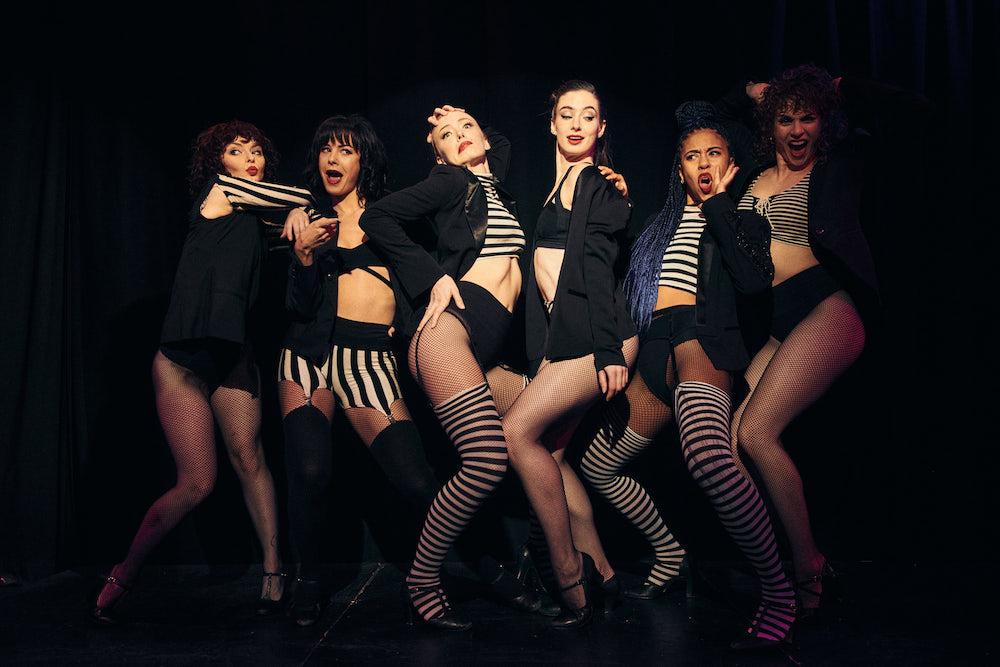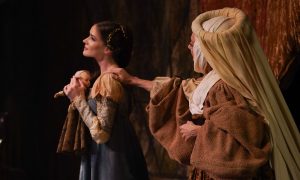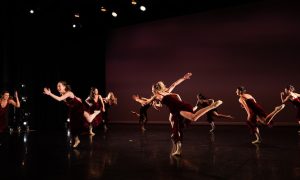The first cabaret in the modern sense is often credited to Le Chat Noir in Montmartre, Paris, in 1881. It brought together a diverse crowd, attracting rich and poor clientele alike, all mixing for an exotic evening on the town. Cabarets offered live music and dance, satirical comedy and political commentary, drinks and dinner, and always energetic, risqué entertainment commonly considered “low-brow.” They began popping up all over Paris, including the famous Moulin Rouge.
Cabaret spread all over Europe, and solidified itself in the American scene in the 1910s, catching the upswing of jazz music and the Roaring ’20s, but also Prohibition Era. American cabarets were often performed in speakeasies, adding to their underground allure.
The Great Depression took a toll on cabaret venues, but the Cabaret Tax implemented in the 1940s (forcing any venue that served drinks and allowed dancing to pay a 30 percent tax toward war efforts) closed most remaining cabarets. With that, cabaret as we’d known it with dance at its center faded in America.
But we’re in the midst of a renaissance – dance cabarets are popping up again, often two or three in any given entertainment-forward city. Think of The Box in New York, Get on the Fringe in LA, or Crazy Horse in Paris. Something about our modern society’s makeup has brought cabarets back, and I’m curious what it is.
We spoke with Jen Oleksiuk, director of a popular cabaret in Vancouver: The Smoke Show. We talked through why cabarets are making a comeback, and how The Smoke Show’s wildly entertaining evenings – with sharp technique, sensual storytelling, cheeky comedy, and interactive, get up and dance on the tables style fun – are part of this resurgence. If cabaret as it used to be was risqué dance and comedy, with through lines of storytelling and sociopolitical commentary, what is it today?
“It’s all those things, but it’s gotten so much more stylistically diverse,” says Oleksiuk. “The Smoke Show specifically can be Chicago/Fosse style, theater jazz, contemporary, hip hop, it can have acrobatic elements, sometimes it has burlesque influences.”
She adds, “Traditional cabarets had live music, which The Smoke Show doesn’t have. Most cabarets now don’t have live music not because we don’t want to, but because we can’t afford it.” That’s one thing the old day cabarets and their contemporary counterparts share; any artform perceived as ‘low-brow’ runs on tight margins.The Smoke Show uses music that ranges from disco, to ’50s crooner classics, to indie punk rock. There are props and set pieces, and a laundry list of lighting cues for each number. Backstage, there are quick changes and tech tracks. The dancers don sequined and sparkled costumes over their uniform fishnets and heels. There are, of course, bowler hats and canes and chairs. But there are also cowboy hats and silhouetted saloon doors. A little magic and some light pyrotechnics. There are smaller stages scattered throughout the room where dancers appear unexpectedly. The dancers perform unison group numbers, then split off as individual characters in their solos. Audience members watch the mainstage while sipping cocktails at their seats, but are warned pre-show to clear their tables of any drinks, lest a dancer finds their way on top of one. Oleksiuk is director, choreographer, costume designer, seamstress, set builder, props master, venue coordinator and more. She handles marketing and ticket sales, and even hosts the shows.
Choreographically, cabaret has diversified. As an example, Oleksiuk’s philosophy is that “the heels are just your shoe. It doesn’t have to dictate how you move; it’s just footwear. Heels can be sexy, but they don’t have to be.” Alongside the popularity of commercial heels classes, Oleksiuk incorporates that style without being restricted by it. You can catch Smoke Show dancers doing hip hop in heels, acrobatics, contemporary, you name it.
The approach to humor and social commentary has evolved as well. Both have always been essential to cabaret, but the society we’re commenting on (and how we joke about it) has changed. “I, unfortunately, used to think female dancers weren’t funny – or weren’t allowed to be,” Oleksiuk admits. “My crew and I would come up with hilarious ideas, and I would catch myself saying, ‘Ugh, if only we were guys.’ Thank god I got rid of that concept.” Now her shows feature hilarious women poking fun at the stereotypes of female sexuality, and peeking into what they might actually find sexy. Women audience members have raved post-finale about how empowered the show makes them feel.
While there’s a clear demand for cabaret, limiting factors include a lack of appropriate venues, and a change in expectation of who produces the show. Cabarets are mostly still performed in small venues – the intimacy and interactivity that close spaces provide have become integral to cabaret, like in the old speakeasies. (Especially compared to the impersonal vastness of proscenium theaters, whose current ticket sales suffer from being labeled as inaccessibly high-brow.) But few small venues are equipped with stages (or backstages) these days. Venues used to produce and cater to cabaret shows, knowing the business they bring in. But now cabarets are their own producers, trying to convince venues to host them – often for a steep cut of their ticket sales. The name of the game now is sustainability. “It still has to feel like an escape from life; that’s why cabaret’s coming back,” Oleksiuk says. But she’s reluctant to call modern cabaret nostalgic – she wrestles with it being thought of as ‘low-brow’. “I think it has to do with cabaret not being considered high quality, even though it is.” We settled for ‘populist’; it’s a social experience accessible and engaging to the average anyone, but without the classist connotations ‘low-brow’ brings. The Smoke Show, and cabaret generally, is fun. It’s a great night out; it makes you laugh, groove and even think. After being stuck inside throughout the pandemic, people want ways to be social.
Going to dinner doesn’t feel special anymore when you can eat out or order in so conveniently. Crowded clubs feel unsafe (or at least strange) post-Covid. Why go to the movies when you have Netflix? Having dinner and drinks at an intimate live show seems to be the ideal. And it’s not just cabaret, but drag, comedy and small stage music.
Oleksiuk believes audience crave live shows like cabaret because they feel inclusive. “Maybe it’s nostalgia, but it’s also people wanting to feel like there’s more. More than just the day to day. And feeling like they’re a part of it.” Maybe more than the impersonal entertainment we can access so easily on any of our many screens? Maybe para-social or screen-restricted connections aren’t hitting the spot anymore? Maybe post-pandemic, we’re craving communal experiences.
I’ve seen audiences leave energetic and ecstatic after The Smoke Show, just so completely present. Not in a meditative way, but an engaged, excited, ‘what should we do next’ kind of way. And I think that’s what we’re all wanting right now. The best way to get it? Support local, see what your city’s got going on.
Follow The Smoke Show on Instagram: @the.smokeshow.
By Holly LaRoche of Dance Informa.
















